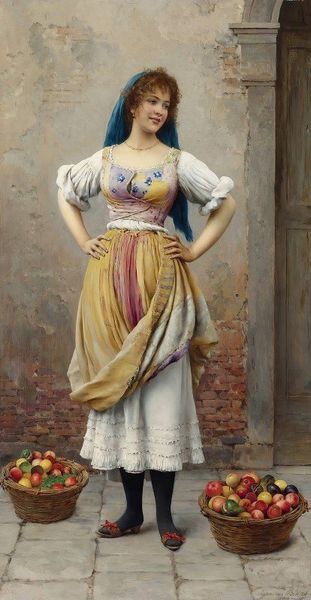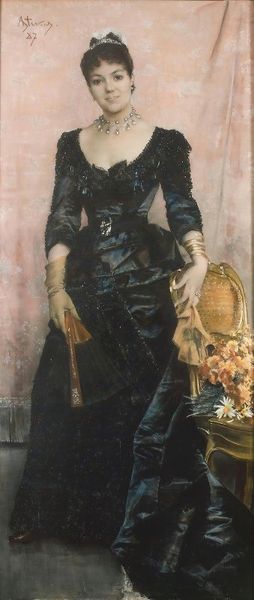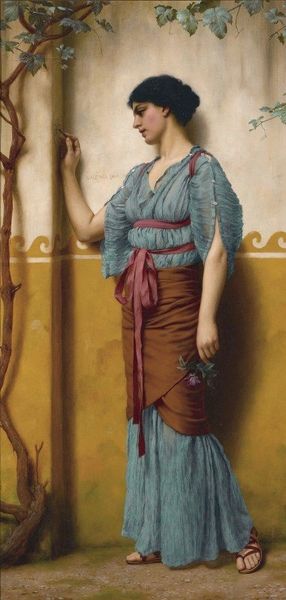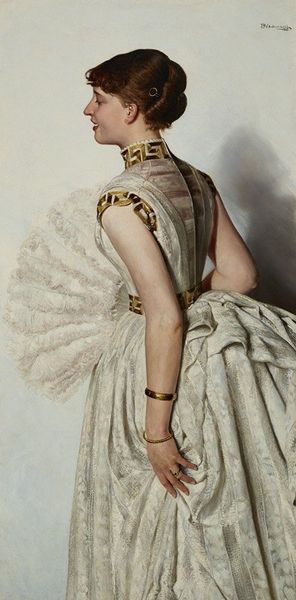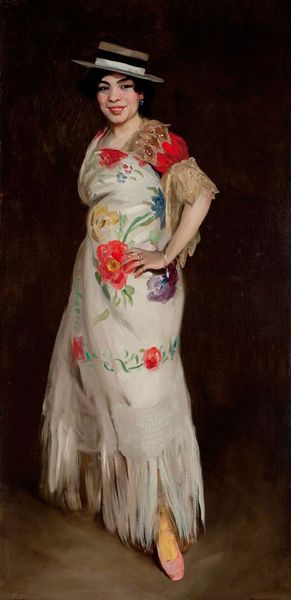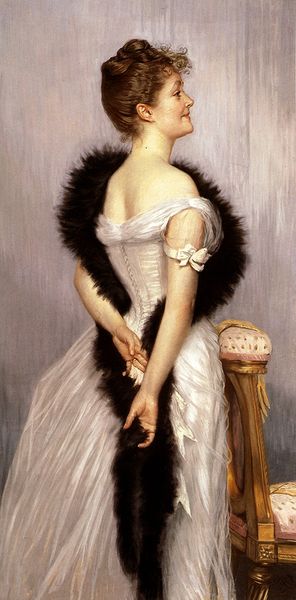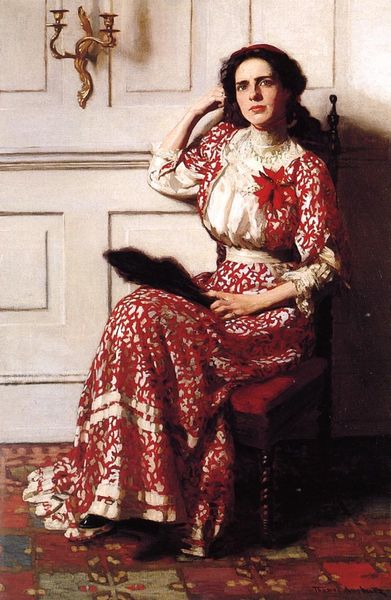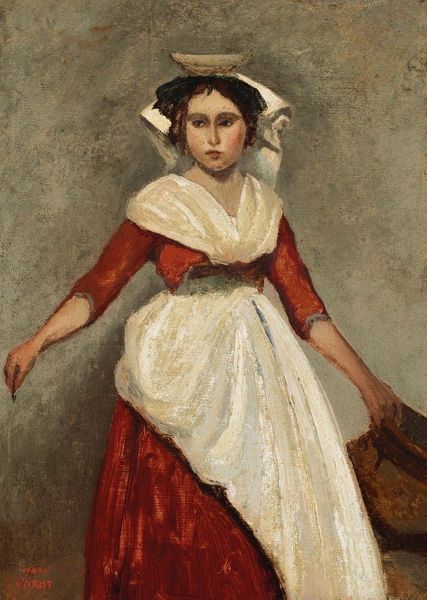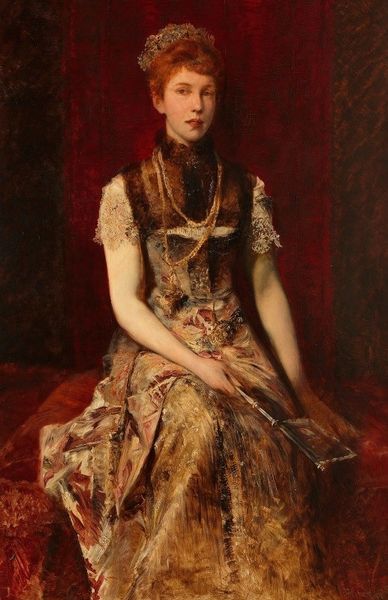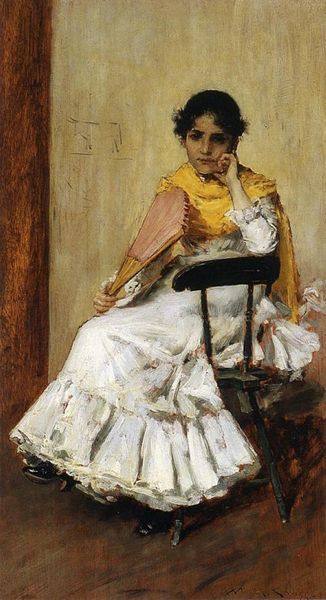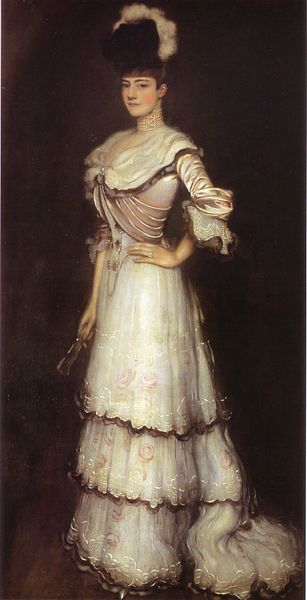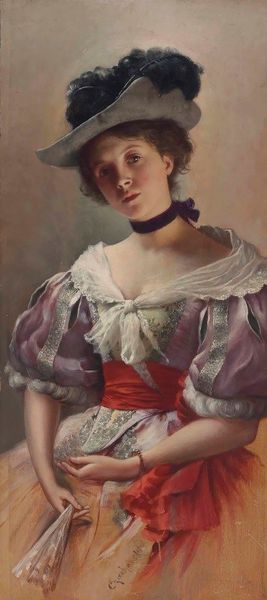
painting, oil-paint, impasto
#
portrait
#
character portrait
#
character art
#
painting
#
oil-paint
#
figuration
#
impasto
#
intimism
#
romanticism
#
genre-painting
#
academic-art
#
realism
Copyright: Public domain
Curator: Raimundo de Madrazo’s oil painting, "Portrait of Aline Masson Leaning on a Sofa", certainly catches the eye, doesn’t it? The way light plays on fabric, it feels incredibly intimate. Editor: It’s visually striking. I’m immediately drawn to the vibrant reds in her striped skirt – there's something about that boldness contrasted with her somewhat melancholic gaze that sparks curiosity. What can you tell us about this painting? Curator: It embodies a very particular era. Madrazo, belonging to a family of distinguished artists, depicts Aline with a flair characteristic of his time – think Academic art infused with a Romantic sensibility. It is meant to exemplify not only the person of Aline Masson, but her position in society. Editor: Society and class immediately jump to mind, not only her appearance but her pose, this "leaning on the sofa" feels studied. How do such portraits reinforce the status quo? Curator: Absolutely, these kinds of portraits played a role in constructing social hierarchies and, I'd argue, maintaining power structures. Note the craftsmanship of the artist, as the details show taste and position. Editor: Yes, exactly, and one must wonder, what message is sent to other women of that same time, maybe with different conditions? What is a painting like this meant to convey in the wider dialogue? The clothing, jewelry, the slight but knowing glance… all point to layers of wealth and, therefore, privilege. Curator: It brings attention to those crucial questions about the function of art itself within the sphere of social power, even unspoken. Paintings like these are records that we can use as activists to explore the narrative and reimagine those who do not have this same type of advantage. Editor: True. It’s not just about appreciating brushstrokes; it’s about unearthing the stories behind the brushstrokes, interrogating the ‘who,’ ‘why,’ and ‘for whom.’ A reminder of our ever-evolving role in understanding, contextualizing, and perhaps, challenging the image itself. Curator: Well said. I agree, reflecting on that wider social perspective encourages engagement in crucial dialogues on visibility and representation. It is our challenge to contextualize images that still have tremendous cultural resonance today.
Comments
No comments
Be the first to comment and join the conversation on the ultimate creative platform.
